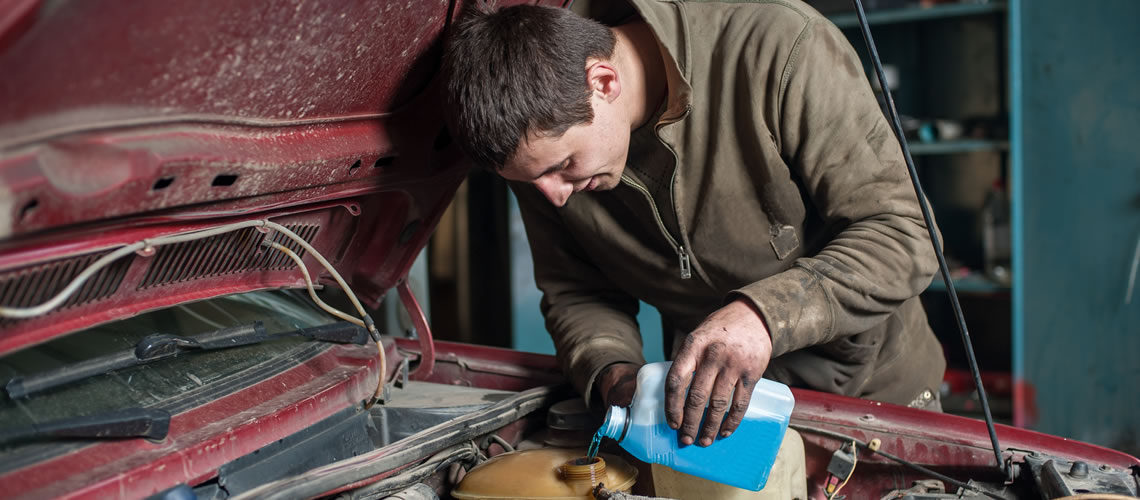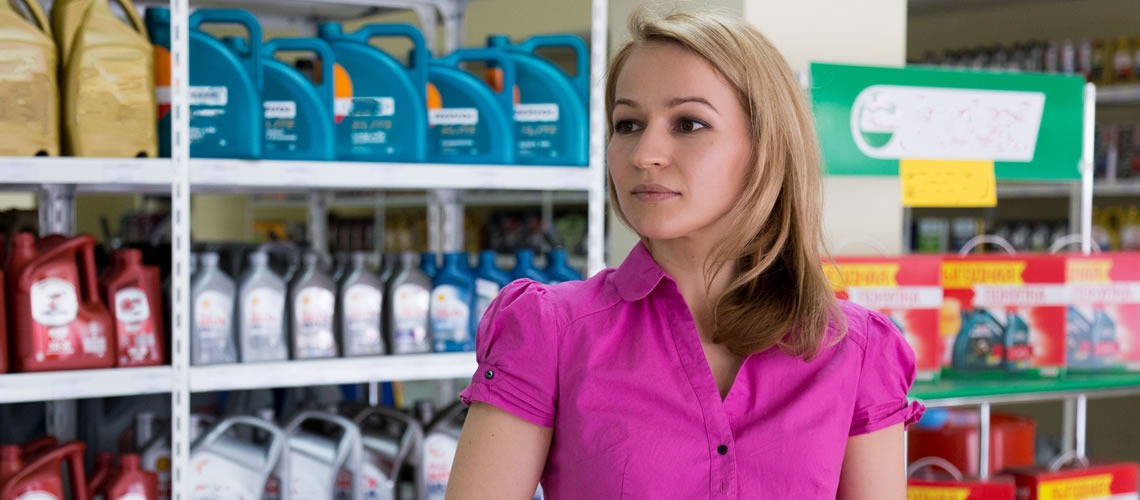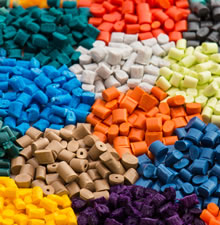What was the rationale behind the decision to create the Union, and what are its goals?
We set up the Union because of the shortcomings in our legislation, because we saw that the market was being flooded with counterfeits while our control and monitoring bodies were not really coping with it.
THE UNION ALREADY HAS THREE MAJOR COOLANT MANUFACTURES AMONG ITS MEMBERS: TOSOL-SINTEZ-INVEST, OBNINSKORGSINTEZ, AND TECHNOFORM. THEY MAKE UP AROUND 60% OF THE MARKET
The rationale was the drawbacks in Russian legislation and the increasing amount of fake products in the market – something that the regulators had not been able to properly address.
Our first focus is to initiate changes in existing legislation. As one example, Russia does not even have a government standard for brake fluids, meaning that a product that directly affects road safety is not subject to any form of regulation. Potential accidents as a result of the poor quality of brake fluids are not currently addressed as a real issue. Our priority today is to have the respective statutory documents developed and approved in Russia.
Another important area is efforts against fake products. If you visit virtually any car care store, you will see shelves and shelves full of counterfeits. They are readily available to customers, and there is no one doing anything about it. We intend to make sure all these violations receive due attention from regulators and law enforcement agencies. We need to have store inspections and audits, with their results and findings submitted to the relevant authorities, and we also need media coverage and awareness raising activities to let people know about what is being done and what the implications of using fake products may be. The Union already has three major coolant manufactures among its members: Tosol-Sintez-Invest, Obninskorgsintez, and Technoform. They make up around 60% of the market and also meet almost 100% of the demand for coolants from car makers and assembly plants. SIBUR as a producer and supplier of feedstock for engine coolants is also among our members. We cooperate closely with legal and marketing teams of our members and have already established some very good ties.
We have informed other producers about our Union, and I have every confidence that we will get new members as soon as there are tangible and meaningful achievements under our belt.
A product that directly affects road safety is not subject to any form of government regulation
You have mentioned efforts against fake products as one of your priorities. In this industry, how do you define a product that is fake?
It is a coolant that has methanol in it. In November 2015, the Union purchased 20 samples of coolants and analysed them. The tests revealed methanol in eight samples – and that's an alarming 40% of the coolants. This is a very serious issue, and we need to address it from two angles. One is to improve the existing rules and regulations to give regulators and law enforcement agencies a solid legal ground to prosecute counterfeiters. The other area of work is awareness raising to make sure consumers know that there are fake products in the market and that they are a danger.
We are currently developing a study into methanol and putting together a market analysis for engine coolants. We know for a fact that the market has lots of "grey" feedstock not included in the official statistics, and we intend to have a quantitative assessment of that.
Why do fake products actually appear?
PRIOR TO 2011, WHEN METHANOL-BASED COOLANTS ONLY BEGAN TO EMERGE, LEGAL PRODUCERS HAD BEEN PERFECTLY ABLE TO MEET 100% OF THE DEMAND.
Methanol is several times cheaper than ethylene glycol, so making a coolant with methanol instead of ethylene glycol definitely helps to cut the price of the end product. What is important, coolants that contain methanol can still meet the only statutory criterion that is currently obligatory for the producers as a parameter listed in the technical regulation of the Customs Union. That parameter is the freezing point temperature. According to estimates by the Union's members, up to 40% of coolants available in Russia are methanol-based. In cheap coolants, we are talking 80 to 90%.
And what is bad about using methanol in coolants?
There are two aspects to it. First, methanol is a health hazard because of its high toxicity. Second, methanol is a potential danger to cars. Methanol-based cooling liquids and antifreezes are not suitable for the engine's cooling system and will eventually cause it to break down, leading to costly repairs. This is the key reason why international producers do not use methanol: its very properties make it unfit as feedstock for coolants. Whenever you see a methanol-based coolant, it is a fake product for sure.
What are the producers that operate in good faith?
Those whose products meet the high international standards recognised by car manufacturers.
But that is something producers can choose or not choose to do. Does that mean that fake products in the coolant market are a result of poor regulation or control in the industry?
Let me reiterate: the technical regulation of the Customs Union on automotive lubricants and technical fluids has only one parameter for a coolant to meet, and that's the freezing point temperature. Basically, you can get that number by adding the right amount of just any alcohol. Indeed, there are a number of very important criteria that directly affect the car and, if introduced, can make any additions of methanol illegal altogether. But for some reason they are not in the technical regulation. This leaves us with the market that has no legal barriers to methanol-based coolants.
For producer, integrity means making products that meet the high international standards recognised by car manufacturers.
Since 2013, this issue has been taken up by many businesses as they attempted to address Russian regulators and the Eurasian Economic Commission (EEC). After that, the EEC Board capped methanol content at 0.05%, a requirement later included into the sanitary rules. However, to date the EEC Board has not integrated this threshold into the Customs Union's technical regulations, which basically means that the 0.05% cap is a recommendation rather than a statutory requirement.
We remain committed to having this issue resolved. Recently, we have prepared new documents to be filed with the EEC, and we also plan to buy new samples of coolants in the retail market to see what has changed since last November, when we did the same exercise. We will then announce our findings and submit them to the media and also to Rospotrebnadzor, the Russian consumer rights watchdog, and the EEC to give them insights into the poor condition of the market.
Is the market ready for a complete ban of methanol-based coolants? If you look at windshield washer fluids, a considerable portion of the manufacturers have simply gone into the grey market, with the situation for consumers remaining unchanged.
These coolants are in the grey market as they are. There is not a single producer that reports the purchase of methanol or lists it among ingredients on the labels. If Rospotrebnadzor believes that methanol is banned in coolants, it must make sure this ban is enforced. To do so, the technical regulation needs to cover all the parameters that ensure quality. As an alternative, government standards (GOST) need to be made mandatory again.
Can the elimination of fake products lead to shortages in the market or result in more expensive car care products?
There is no risk of shortage whatsoever. The market will have enough feedstock even if methanol is indeed banned. Legal producers willing to operate in the market will have the feedstock they need. Also, engine coolant producers have their own capacities, so in terms of pure numbers, the market will not be affected. By the way, prior to 2011, when methanol-based coolants only began to emerge, legal producers had been perfectly able to meet 100% of the demand.
As for prices, we do expect some pressure here. It is the cheapest segment that has most of the methanol-based coolants, and here the prices are quite likely to go up. Still, dealing with all the consequences of using a cheap coolant has a much bigger impact on your budget than the price of a quality product. One of the risks is having to rebuild the engine – that alone may cost you tens or, in many cases, hundreds of thousands of roubles. And there is also damage to your health, which is something you can't really quantify. Our firm belief is that the market would only benefit should methanol be banned completely.
The most responsible producers make their products in accordance with foreign standards recognized by automakers
What is the current shape of the market for car care products? How has the crisis affected it?
When people are strapped for cash, they naturally look for better value for their money. Consumers who used to prefer international brands turn to Russian labels instead, and within the segment of Russian products, consumers are also switching to whatever is cheaper. The net effect for Russian manufacturers is positive, as more people buy their products. However, the market at large is not doing better. For example, car owners are putting off their regular maintenance and will not have their vehicles serviced until they are at the very end of their 15,000 km interval. People generally try to avoid going to car shops and look for ways to save on different services they are offered. We even see a decline in how much people drive their cars, so mileages are dropping. As a result, the market is shrinking. Currently it is inevitable, but we do hope the trend will get reversed.
Download PDF





